6 No-Equipment Moves That Build More Muscle Than Gym Workouts After 50
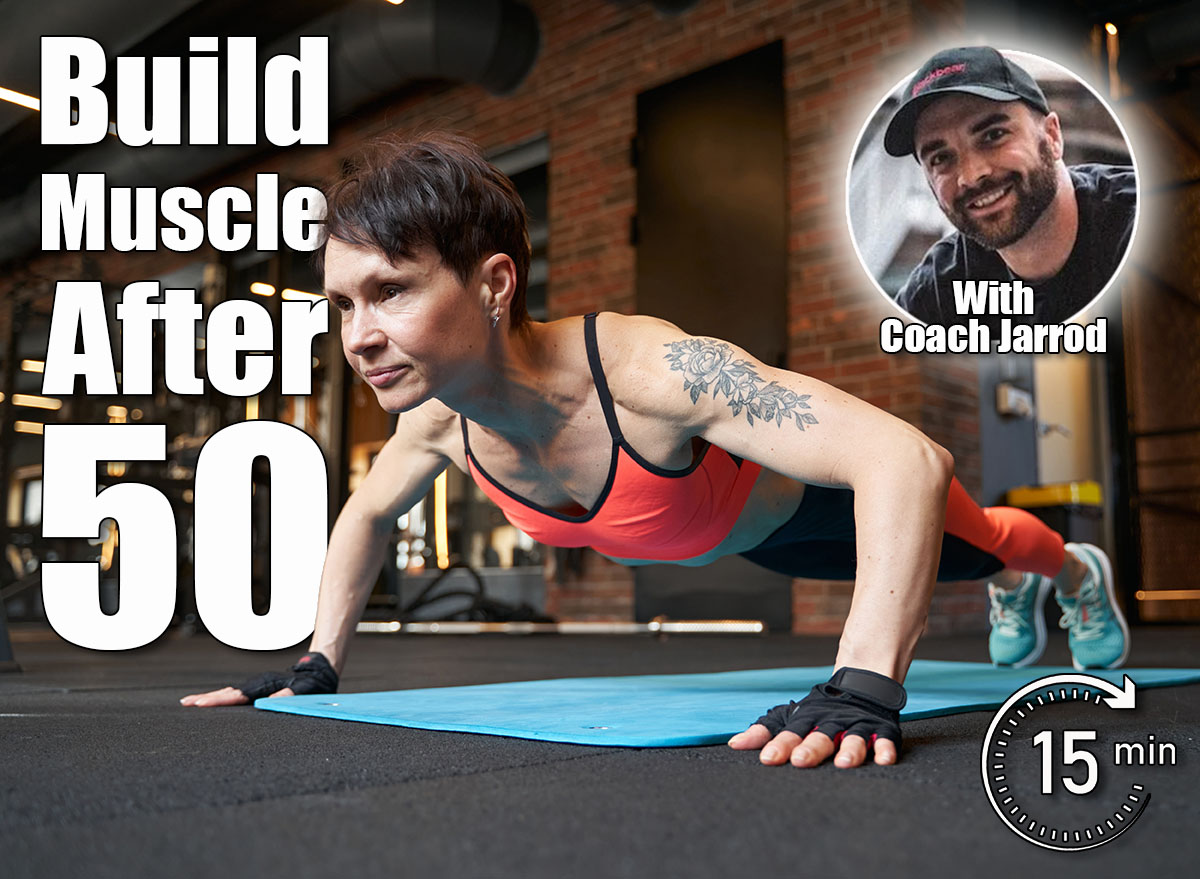
You don’t always need machines, barbells, or rows of dumbbells to get stronger after 50. Some of the best muscle-building exercises are simple bodyweight moves you can do at home, in a hotel room, or outside at the park. These no-equipment classics challenge multiple muscle groups at once, build functional strength, and keep your joints moving the way they should.
For men and women in their 50s and beyond, efficiency matters. These moves not only build muscle but also support balance, posture, and everyday energy. The more you can move your body well, the better you’ll handle everything from carrying groceries to playing with your grandkids.
This list highlights six no-equipment moves that hold their own against gym workouts. If you perform them consistently and with good form, you’ll develop lean muscle, strength, and stability at any age.
6 No-Equipment Moves to Build Muscle After 50
Push-Ups
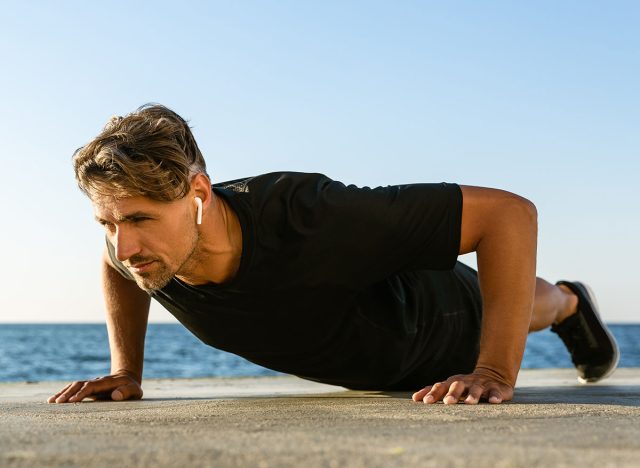
Push-ups train your chest, shoulders, and triceps in one motion while demanding core stability. After 50, maintaining strong pushing strength supports posture and keeps your upper body functional for daily activities like lifting, pressing, and pushing. Unlike machines that isolate muscles, push-ups work multiple regions at once, creating a bigger strength and muscle-building payoff.
Muscles Trained: Chest, shoulders, triceps, core.
How to Do It:
- Place your hands shoulder-width apart on the floor.
- Extend your legs straight behind you with your toes on the ground.
- Keep your body in a straight line from head to heels.
- Lower your chest toward the floor by bending your elbows.
- Press through your hands to return to the starting position.
Recommended Sets and Reps: Perform 3 to 4 sets of 8 to 15 reps. Rest for 60 seconds between each set.
Best Variations: Incline push-ups, decline push-ups, close-grip push-ups, push-ups with shoulder taps.
Form Tip: Keep your elbows tucked at about a 45-degree angle from your torso to protect your shoulders.
Lunges
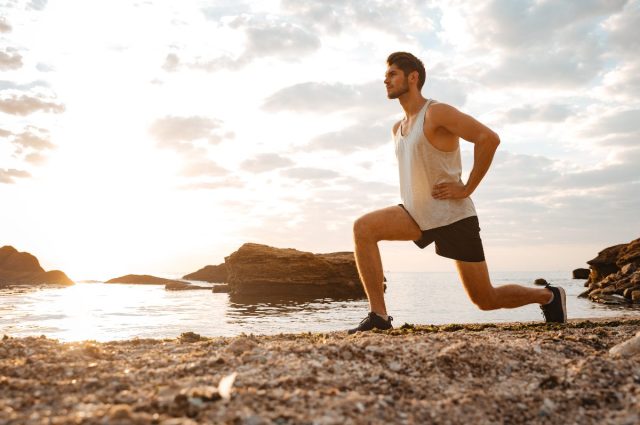
Lunges strengthen the quads, hamstrings, and glutes while challenging balance and coordination. They also train each leg individually, which improves stability and reduces the risk of imbalances as you age. Lunges mimic everyday movements like climbing stairs or bending to pick things up, making them one of the most functional strength-builders.
Muscles Trained: Quads, hamstrings, glutes, calves, core.
How to Do It:
- Stand tall with your feet hip-width apart.
- Step one foot forward and bend both knees to about 90 degrees.
- Keep your chest upright and core tight.
- Press through your front heel to return to standing.
- Alternate legs with each rep.
Recommended Sets and Reps: Perform 3 sets of 10 to 12 reps per leg. Rest for 45 to 60 seconds between sets.
Best Variations: Reverse lunges, walking lunges, lateral lunges, pendulum lunges.
Form Tip: Keep your front knee stacked over your ankle and avoid letting it cave inward.
Squats
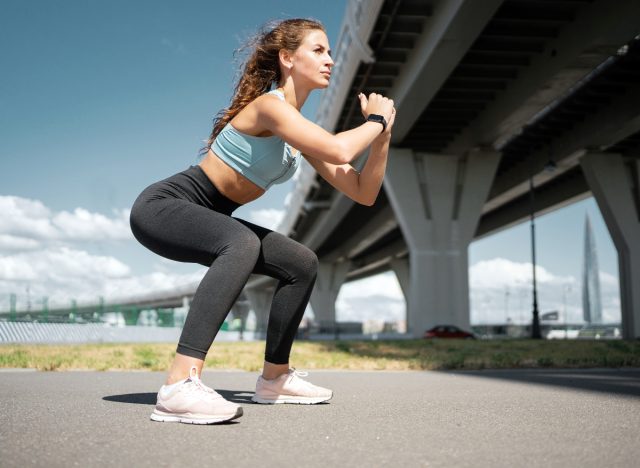
Squats are the king of lower-body exercises. They strengthen nearly every muscle in your legs and hips while keeping your joints mobile. After 50, squats are essential for preserving the ability to sit, stand, and move with confidence. They also recruit your core muscles to stabilize your spine, giving you a full-body effect.
Muscles Trained: Quads, hamstrings, glutes, calves, core.
How to Do It:
- Stand with your feet shoulder-width apart and toes slightly turned out.
- Keep your chest tall and brace your core.
- Push your hips back and bend your knees to lower down.
- Lower until your thighs are parallel to the ground (or as far as comfortable).
- Press through your heels to return to standing.
Recommended Sets and Reps: Perform 3 to 4 sets of 12 to 15 reps. Rest for 60 seconds between sets.
Best Variations: Sumo squats, split squats, squat pulses, jump squats.
Form Tip: Keep your weight evenly distributed through your feet and avoid letting your heels lift off the ground.
Planks
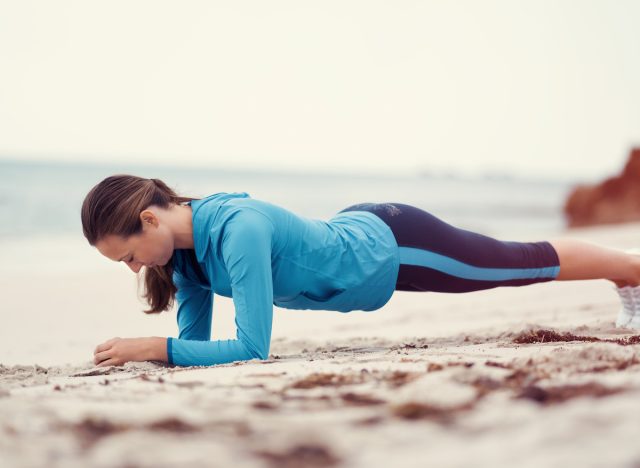
Planks build deep core strength that crunches and sit-ups can’t match. They stabilize the spine, improve posture, and enhance performance in every other strength exercise. For people over 50, stronger core muscles mean fewer back aches, more balance, and greater protection against injury.
Muscles Trained: Core, shoulders, chest, glutes.
How to Do It:
- Place your forearms on the floor with elbows under your shoulders.
- Extend your legs behind you with toes on the ground.
- Keep your body in a straight line from head to heels.
- Brace your core and hold the position without sagging or arching your back.
- Maintain steady breathing throughout.
Recommended Sets and Reps: Hold 3 to 4 sets of 20 to 60 seconds each. Rest for 45 seconds between sets.
Best Variations: Side plank, plank with shoulder taps, plank to forearm reach, rotating planks, plank with hip drops, plank pull-throughs.
Form Tip: Squeeze your glutes and draw your belly button in toward your spine to keep your core fully engaged.
Tricep Dips
Strong arms matter just as much as strong legs. Tricep dips target the back of your arms, an area that often loses tone with age. They also recruit your shoulders and chest, giving you a compound upper-body workout without weights. This simple move builds strength for pushing, pressing, and stabilizing movements.
Muscles Trained: Triceps, shoulders, chest, core
How to Do It:
- Sit on the edge of a sturdy chair or bench.
- Place your hands beside your hips with fingers pointing forward.
- Slide your hips off the edge and extend your legs slightly forward.
- Bend your elbows to lower your body toward the ground.
- Press through your palms to return to the starting position.
Recommended Sets and Reps: Perform 3 sets of 8 to 12 reps. Rest for 60 seconds between sets.
Best Variations: Bent-knee dips, straight-leg dips, dips with feet elevated
Form Tip: Keep your elbows pointing backward rather than flaring out to protect your shoulders.
Step-Ups

Step-ups combine strength, balance, and coordination in one move. They train your legs and glutes while challenging stability in a way that machines can’t replicate. For older adults, step-ups are especially valuable because they mimic real-life movements like climbing stairs or stepping up onto a curb, building both strength and functional independence.
Muscles Trained: Quads, hamstrings, glutes, calves, core
How to Do It:
- Stand in front of a sturdy step, box, or bench.
- Place one foot firmly on the surface.
- Drive through your heel to step up and bring your other foot to meet it.
- Step back down under control with the same foot.
- Alternate your lead foot with each rep.
Recommended Sets and Reps: Perform 3 sets of 10 to 12 reps per leg. Rest for 45 to 60 seconds between sets.
Best Variations: Side step-ups, step-ups with knee drive, slow tempo step-ups
Form Tip: Keep your torso upright and avoid pushing off too much with your trailing leg.
The Best Action Steps for Building Muscle After 50
Staying strong after 50 doesn’t have to be complicated. The key is consistency, smart progression, and making sure your body has the right fuel and recovery to grow. Follow these steps to maximize results from no-equipment training.
- Train three times per week: Perform full-body sessions with these six moves to cover every major muscle group.
- Progress gradually: Add reps, extend your plank holds, or slow down your tempo to keep your muscles challenged.
- Focus on form first: Quality reps always beat quantity. Proper technique protects your joints and ensures you target the right muscles.
- Support recovery with protein: Eat protein-rich meals throughout the day to help repair and build lean muscle.
- Prioritize rest and sleep: Give your body 7 to 9 hours of sleep and recovery days so your muscles can grow stronger.
- Stay active daily: Walk, stretch, or move in simple ways outside of workouts to keep your body energized and mobile.
Looking for more easy ways to lose fat? Here’s How Long Your Walking Workout Should Be To Shrink Belly Fat.